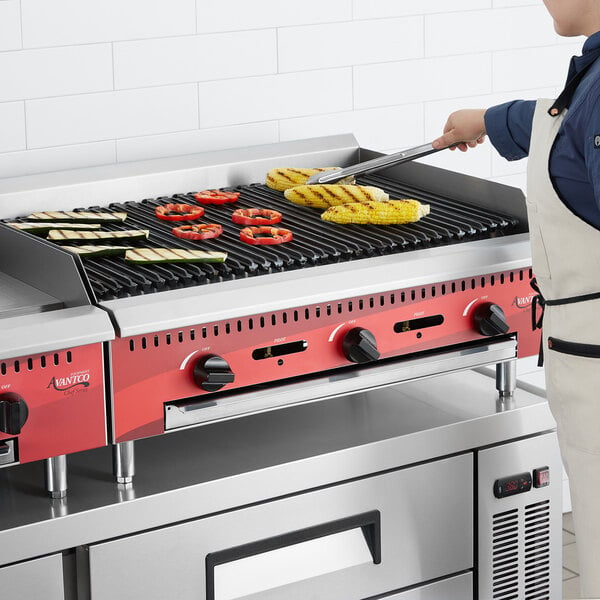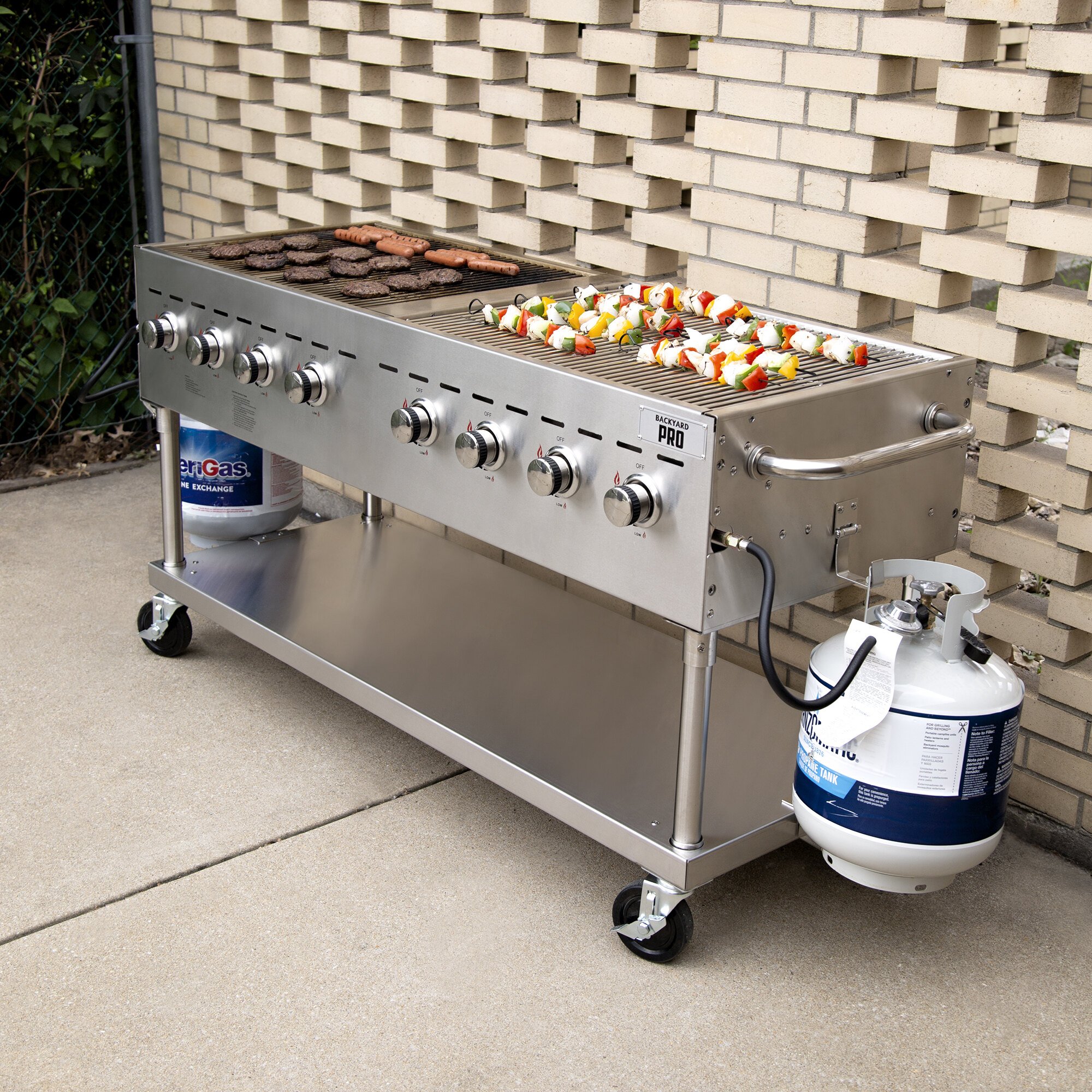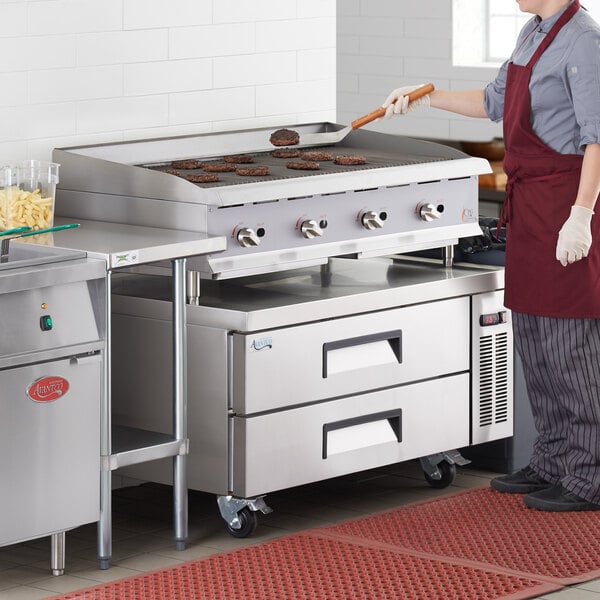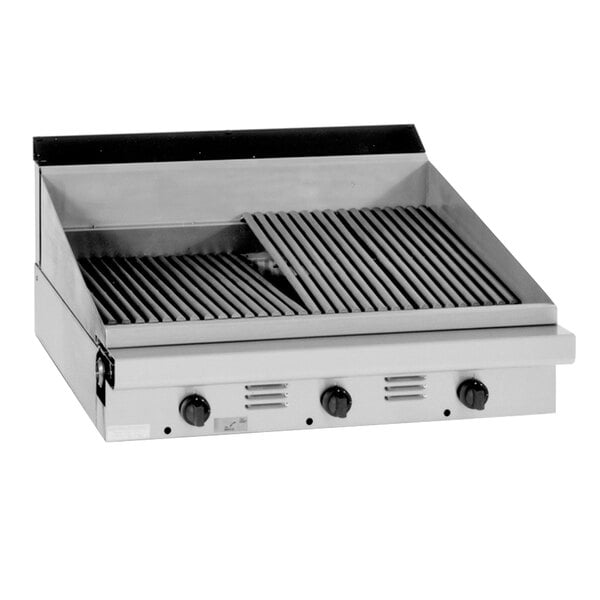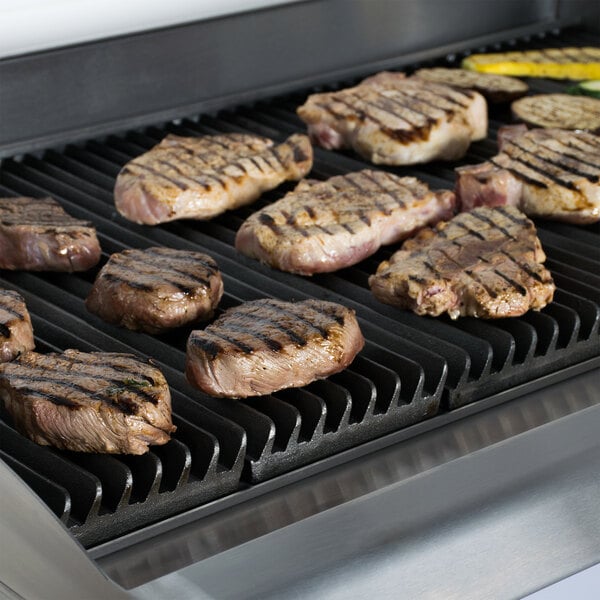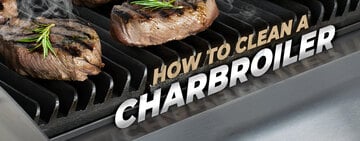When it comes to selecting the perfect charbroiler for your commercial kitchen, there are several purchasing considerations you should keep in mind. Certain charbroiler parts and accessories, as well as the details of your unit, can significantly impact your cooking experience. Additionally, the materials it is made from can affect your charbroiler's performance.
Grate Style
Choosing the right grate style for your charbroiler is crucial in achieving the desired cooking results for your menu items. They are the surface on which your food rests as it cooks, making them integral to achieving the desired texture in your dishes. We've outlined the two main styles of charbroiler grates below.
- Fixed grates: These grates will always retain the same dimensions. They are typically made from cast iron or stainless steel and can withstand high temperatures and heavy use.
- Adjustable grates: Adjustable grates offer increased flexibility while cooking. Their height can easily be adjusted, allowing you to move food closer to or further away from the flame. This feature gives you greater control over the cooking process so that you can achieve different levels of sear and char on your food.
Grate Material
Grill grate materials can significantly impact the efficiency, performance, and durability of your charbroiler, so it's important to choose the right one for your needs. Consider how much money you are willing to spend and what level of performance you are looking for before making a purchase.
- Cast iron grates: Cast iron grates are the most common type of charbroiler grates. They are known for their exceptional durability and heat retention properties but may be difficult to clean. They also excel at distributing heat evenly, ensuring consistent cooking results.
- Chrome-plated grates: These grates are typically found on outdoor charbroilers, though they can be used on indoor models as well. They offer increased corrosion resistance, helping them remain in optimal condition even when exposed to the elements. Chrome plating also provides a smooth surface that is easy to clean, saving your staff time.
- Stainless steel grates: Stainless steel grates are an excellent option for those seeking superior corrosion resistance. Although stainless steel grates tend to be more expensive than cast iron or chrome-plated grates, they are highly durable and well-suited for outdoor applications.
Backsplash
A backsplash or sidesplash prevents grease, food particles, and other byproducts of the charbroiling process from splattering onto surrounding walls, counters, and equipment. They extend vertically from the cooking surface, creating a barrier between the unit and its surroundings. These components are typically built into larger units such as freestanding charbroilers, but they are not limited to large units alone. Some countertop models may also feature a backsplash, offering the same level of protection and convenience in a more compact package.
Burner and Radiant Types
The burner and radiant are two essential components of a charbroiler that work together to deliver consistent and efficient heat for cooking. Burners act as the heat source, while radiants direct heat towards the grates. Choosing the right burner and radiant materials for your charbroiler is crucial for achieving optimal performance, energy efficiency, and consistent cooking results. Consider the demands of your kitchen, the type of foods you'll be cooking, and the expected usage when making your selection.
- Cast iron: These burners heat up quickly and retain heat well. However, they are prone to rust and corrosion, leading to clogged burner ports and decreased performance.
- Stainless steel: Durable and corrosion-resistant, stainless steel burners can prolong the life of your charbroiler. Stainless steel burners are typically more expensive and do not retain heat as well as their counterparts.



